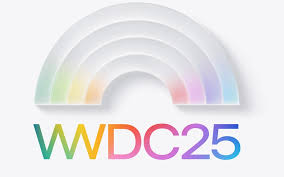Apple’s Cautious AI Approach at WWDC 2025: Strategy or Stumble?

Apple’s 2025 Worldwide Developers Conference (WWDC) has come and gone—but instead of wowing the tech world with a powerful AI revolution, the company has taken a surprisingly cautious path. While Apple did unveil some innovative features, its restraint in fully integrating AI—especially into Siri—has left investors and tech enthusiasts questioning its long-term vision in the AI race.
Let’s explore what Apple announced, what it didn’t, and what this tells us about the company’s evolving strategy.
🔍 What Was Announced?
At WWDC 2025, Apple introduced several updates across its ecosystem:
-
iOS 19 / macOS Mammoth / iPadOS 19: Aesthetic upgrades featuring a stunning new “Liquid Glass” design language with layered, translucent UI elements.
-
AI-Powered Tools (but with limits):
-
Apple Intelligence: A suite of on-device generative AI tools for summarizing texts, transcribing voice notes, and smart editing in Mail and Notes.
-
WatchOS 11: Advanced health-tracking powered by AI, including stress prediction and sleep rhythm analysis.
-
Privacy-First Machine Learning: Continued focus on on-device processing to ensure user privacy—AI features run locally or via Apple’s secure “Private Cloud Compute” network.
-
What Was Missing?
The elephant in the room was Siri. While competitors like OpenAI’s ChatGPT, Google’s Gemini, and Microsoft’s Copilot are rapidly evolving into hyper-intelligent assistants, Apple’s voice assistant remains largely unchanged.
-
No major NLP (natural language processing) overhaul.
-
No chatbot-like conversational flow.
-
No public APIs for third-party AI integrations.
Investors responded swiftly. Apple’s stock dropped by 1.5% after the keynote, and it’s now down nearly 20% year-to-date, signaling that Wall Street expected more from Apple in the generative AI space.
Why the Cautious Approach?
Apple’s slower rollout may be frustrating, but it’s not without reason:
1. User Privacy Comes First
Apple’s brand relies heavily on privacy. Rushing out an AI assistant like ChatGPT might compromise data security. Their Private Cloud Compute model reflects this commitment but requires time to scale.
2. Perfection Over Hype
Rather than launching a “beta” AI assistant with occasional hallucinations, Apple seems focused on long-term reliability and trustworthiness, which may delay features but improve user experience.
3. Hardware First, Hype Later
Analysts expect Apple’s AI ambitions to align more closely with its hardware upgrades. Rumors suggest the iPhone 17 Pro (Fall 2025) will ship with dedicated neural engines built for AI processing—possibly when Siri gets her true upgrade.
What This Means for the Industry
Apple’s measured and privacy-centric approach to artificial intelligence is creating a clear strategic divide in the tech industry. On one side, we have companies like Google, Microsoft, Meta, and OpenAI pushing aggressively into generative AI, releasing powerful (though sometimes imperfect) tools at a rapid pace. These firms are racing to establish dominance in a space that’s expected to redefine human-computer interaction. On the other side, Apple is maintaining a deliberate pace, prioritizing user privacy, reliability, and seamless integration into its existing ecosystem. This divergence in strategy reveals that there’s more than one way to lead in the AI space—speed isn’t everything, and neither is being first.
From an industry perspective, this could have long-lasting effects on user expectations and developer ecosystems. By not fully opening Siri to generative AI capabilities or third-party integrations just yet, Apple is signaling to developers and businesses that its AI platform will unfold in a more controlled, structured environment. While this may frustrate innovators looking for a sandbox to test cutting-edge AI experiences, it also ensures that whatever tools Apple does release will function predictably and securely within its hardware and software framework. This is particularly important in fields like healthcare, finance, and education, where Apple is gaining traction and where reliability and data security are non-negotiable.
However, this cautious stance does carry risks. While Apple’s strategy might be ideal from a privacy and security standpoint, the rapid pace of generative AI innovation means the company could risk falling behind. Users are already becoming accustomed to intelligent assistants like ChatGPT and Google Gemini, which offer nuanced conversations, personalized responses, and integrated services. If Apple fails to match or exceed these capabilities within the next year, it could lead to a shift in consumer loyalty, especially among power users, developers, and younger audiences who value cutting-edge functionality.
In short, Apple’s WWDC 2025 decisions are more than just product updates—they’re strategic signals that may influence not only its market position but also how the broader tech industry defines success in the age of AI. Whether this approach will pay off in the long term remains to be seen, but one thing is clear: the future of AI is not just about power and speed—it’s about trust, control, and thoughtful design.
Looking Ahead
All eyes are now on Apple’s September hardware event. If Siri doesn’t receive a major AI boost by then, the company could face growing pressure from both consumers and investors.
Still, if Apple succeeds in delivering a flawless AI experience without compromising user trust, its delayed entry could ultimately become a masterstroke rather than a misstep.
What do you think? Is Apple playing it safe—or falling behind?







